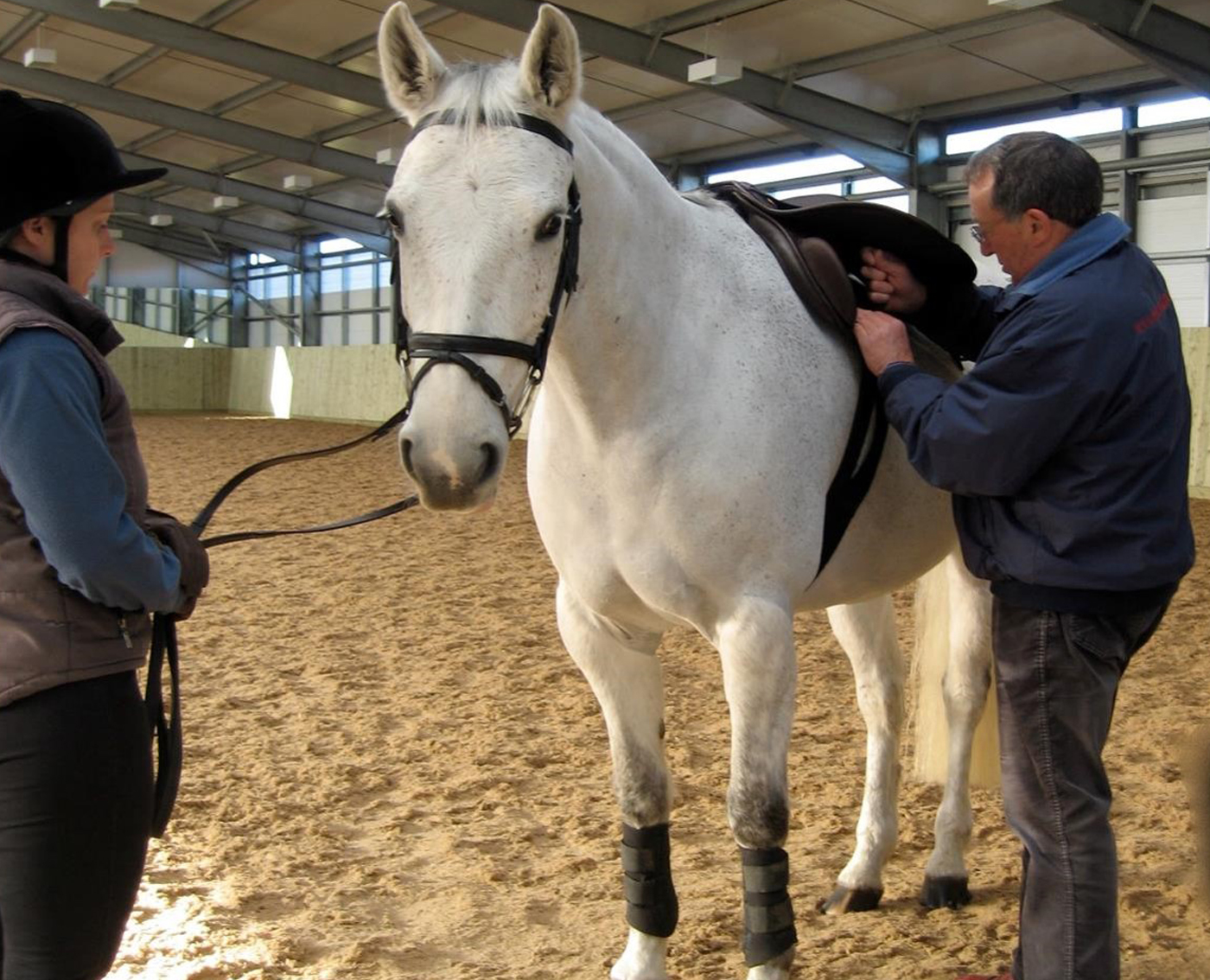Promotional feature with The Society of Master Saddlers
A well-fitting saddle makes for a comfortable, balanced and confident partnership who are able to reach their full potential.
Did you know that the Society of Master Saddlers (SMS) provides training and qualification in saddle fitting for UK and international saddle fitters, and holds a full register of SMS Qualified Saddle Fitters (QSFs)? Would you check if a saddle fitter is an SMS QSF when you look to buy a new saddle or have the fit of your horse or pony’s existing saddle checked?
What is the SMS QSF training pathway?
- The first step is to cover the foundations of saddle fitting, which is done through the introductory course
- Candidates on the training pathway join the SMS mentor scheme
- Since 2017, all individuals on the pathway train for the society’s City & Guilds flocking qualification
- During their third year on the pathway candidates begin an online learning programme that complements the practical skills they have gained
- When ready, candidates complete the intensive qualified saddle fitting course
- The final step is a five-stage City & Guilds examination including a written paper and practical units in conformation and movement, saddle assessment, template and record taking, plus two full practical saddle-fitting assessments
Why use an SMS Qualified Saddle Fitter?
Rigorous training & assessment
The expertise of an SMS QSF is there to guide you through the saddle fitting process so that you and your horse achieve the best outcome and performance.
An SMS QSF will have completed in-depth training and practical experience over a minimum of three years before sitting their examination in order to gain this globally respected City & Guilds qualification.
Comprehensive procedures
The society adapts its training content and method so that it is always current and correct, developing standardised systems or checklists so no essential part of the fitting process is missed.
Continued training and learning
The best saddle fitters say you never stop learning and that is one of the things they love about their work. SMS QSFs must attend a refresher course every two years and complete a set level of continued professional development.
High standards of service with a code of conduct
Registered SMS QSFs agree to abide by a stringent code of conduct, which sets out expected standards of service and professional conduct.
Your appointment: what to expect from your SMS QSF
- When you book the appointment your fitter will take information about your horse, you, and the type of riding you do
- On the day, they will take a more detailed history, and assess the horse’s conformation and soundness for fitting. This is best done on a clean, flat area with good lighting
- A full set of templates are then taken. This helps to identify asymmetry, and changes over time
- Static fit of the saddle is assessed using the seven-point system – have your girth and preferred saddle pad ready so that every element of fit can be evaluated
- The selected new, or adjusted, saddle(s) will be assessed in all gaits, and over a fence if appropriate, to assess fit for both horse and rider
- Dynamics can change considerably from static to ridden, so riding in the saddle is an essential part of the process – have your hat and riding gear to hand
- Your QSF will work alongside your vet, coach, physio and other equine professionals as appropriate
It is important to recognise that horses change shape frequently, dependent on exercise, diet and management. The society recommends that you have your saddle checked by QSF at least every six months, but in some cases the frequency may need to be every two to three months to ensure the ideal fit is maintained. Regular saddle-fit assessments by a qualified, registered fitter are as much a part of good management as footcare, bodywork (for horse and rider), nutrition and training.
To find out more visit www.mastersaddlers.co.uk




